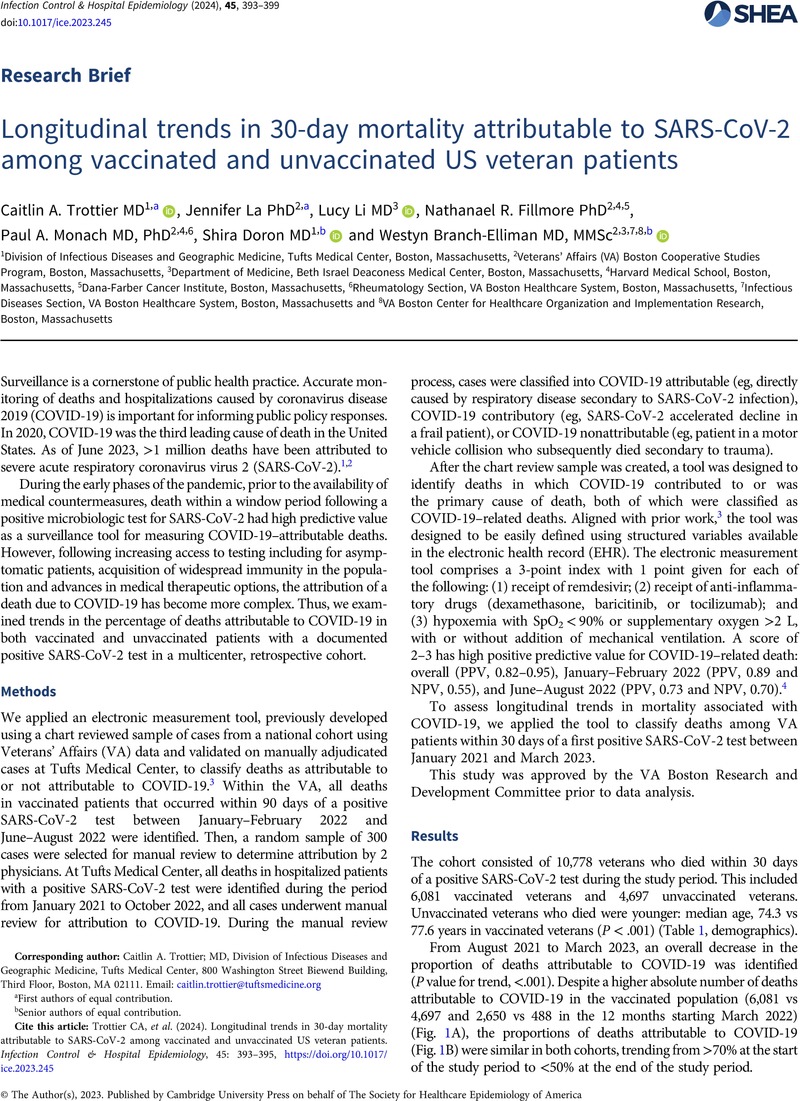Crossref Citations
This article has been cited by the following publications. This list is generated based on data provided by Crossref.
Swinnerton, Kaitlin
Fillmore, Nathanael R.
Vo, Austin
La, Jennifer
Elbers, Danne
Brophy, Mary
Do, Nhan V.
Monach, Paul A.
and
Branch-Elliman, Westyn
2025.
Leveraging near-real-time patient and population data to incorporate fluctuating risk of severe COVID-19: development and prospective validation of a personalised risk prediction tool.
eClinicalMedicine,
Vol. 81,
Issue. ,
p.
103114.




